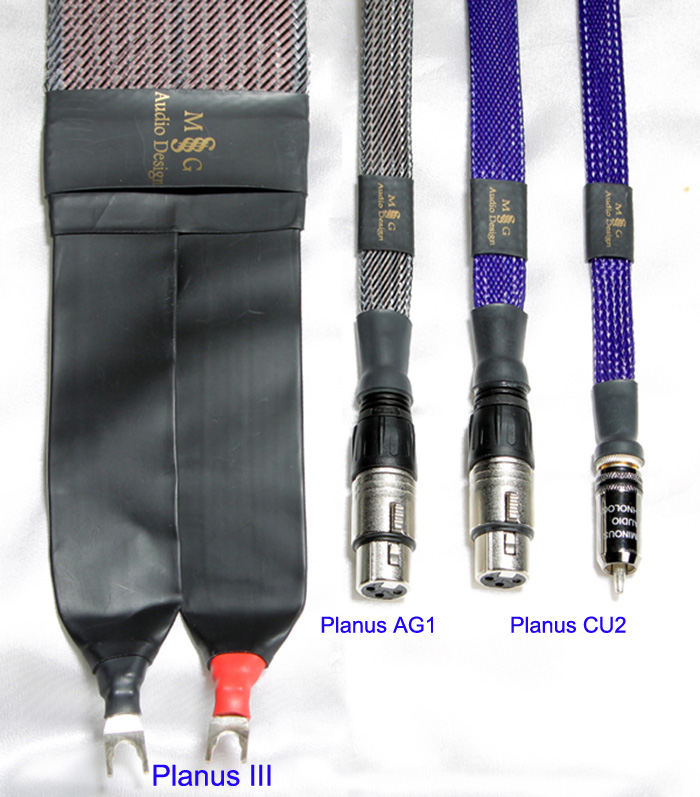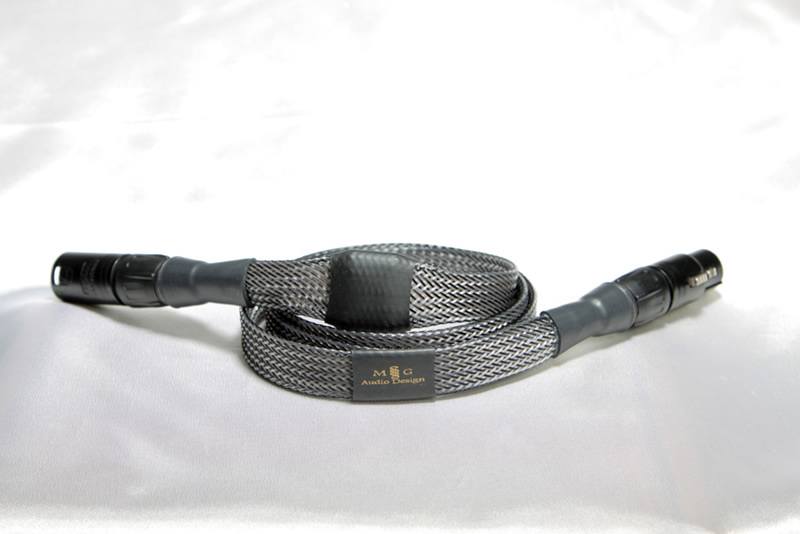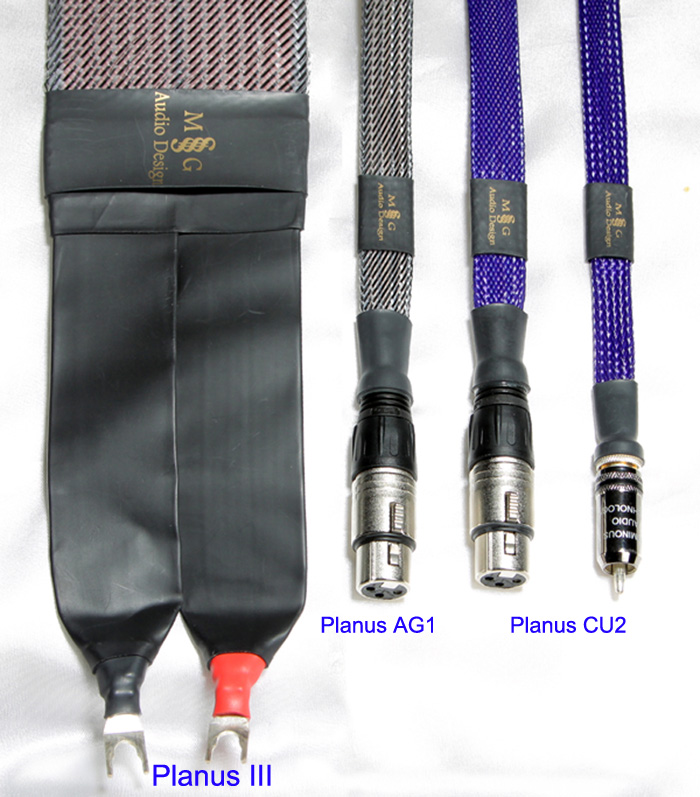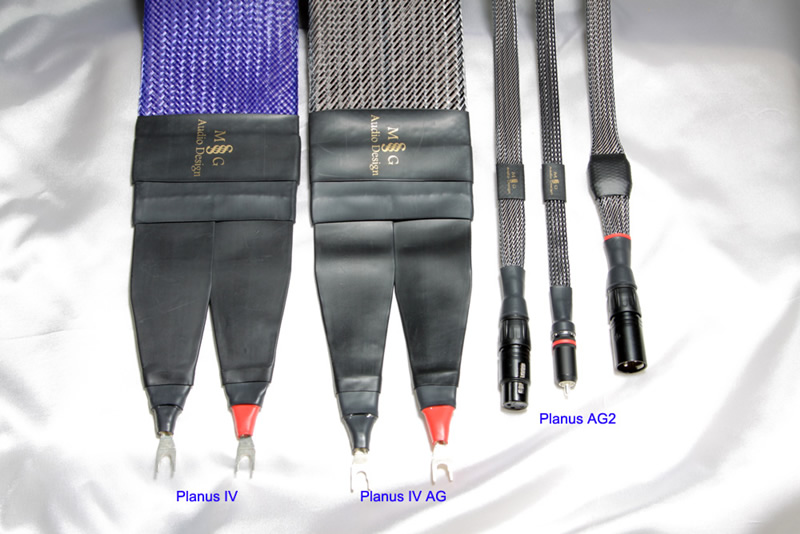點擊查看大圖
View Large
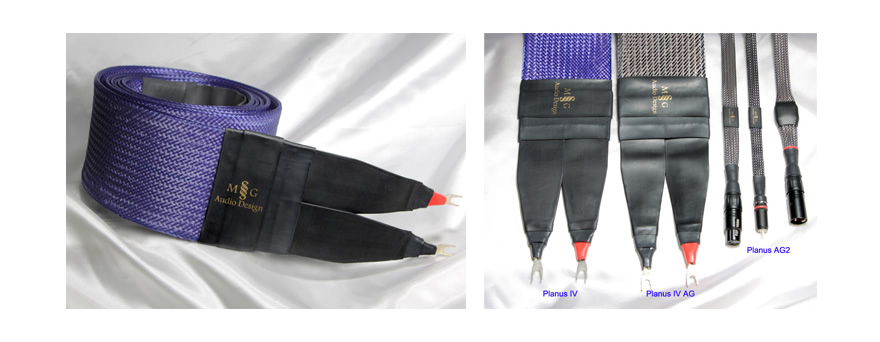

Planus IV Speaker Cable
As the newest members of the Planus cable family, the Planus IV series of speaker cables brings a whole new level of performance to our wire line. Please read about Planus IV AG after reading the rest of this narrative.
Planus IV resolves low-level detail even better than Planus III while also adding a palpable presence to the instruments and voices in the soundstage. You get a better sense of being at the performance. Another veil has been lifted compared to our already incredibly transparent Planus III speaker cables; however, musicality has not been sacrificed – the Planus IV speaker cable is even smoother in its presentation. Planus IV has no nasty sheen or edge you typically find with most other “high resolution” cables, just a natural, balanced sound. With Planus IV wires, more of the subtleties in the performance flow through the system. You are able to hear more of the musicianship of the performer(s). You can more easily “get” what the musician is trying to portray.
The Planus IV series uses an even thinner and wider foil for the conductor than Planus III. It also uses a new PTFE (Teflon) tape formulation for the dielectric. While much of the enhanced performance of the wire can be attributed to the new geometry, some of the performance increase comes from the new dielectric we are using.
In terms audiophiles like to use, Planus IV does everything better than Planus III. The soundstage is wider, deeper and more three-dimensional. The dynamic shading is more evident, with more impact on dynamic passages. It better captures both the leading edge and decay of the fundamentals and overtones. One gets a better sense of pace and timing. The music comes from a blacker background and the retrieval of detail is just stunning -- without any glare or brightness.
With Planus IV one can better hear the complexity of bass in the music; the fundamentals and overtones are more accurately portrayed, giving them the proper weight and speed -- no bloat or tubbiness. The midrange is full with the proper balance between the lower midrange and the upper midrange. The upper frequencies are sweet and extended without any nasty edge or glare.
The differences between Planus IV and Planus III are not startling when you analyze them using the individual criteria discussed above. However, when taken as a whole, the Planus IV offers a whole new level of cable performance.
Planus IV will be offered in both a copper and a silver version. Planus IV uses copper foil as the conductor. Planus IV has is slightly warmer in the upper bass/lower midrange region giving the music a more organic quality. However, Planus IV does not have the resolving power of Planus IV AG. The difference in performance between the two is the difference one gets with silver vs copper. Silver has more high-end extension and better low-level retrieval. Copper is warmer and more organic sounding. Which one is better depends on the system and individual listening preferences. While generally the silver version is “better” in most systems, we recently tried both in a system with Soundlab speakers. In that system, the listening panel preferred the copper version of Planus IV. The stats already did a great job of resolving low-level detail so adding silver to the system did not enhance this part of the system’s performance. Also, the system was already slightly lean in the upper bass region and it became even leaner with the silver. The warmth of the copper was just what the stats needed. However, in all of the other systems we have tested, silver was the prefer cable if you did not consider the cost difference.
Now, the big question on a lot of peoples’ minds – is Planus IV worth the price difference? If you are looking for performance versus cost, the answer is no. On a strictly bang-for-the-buck comparison, Planus III is clearly the superior wire in our line and probably the best value in high end today. Planus IV (copper) offers substantial performance improvements over Planus III, but needs to be used in relatively high- resolution systems to show the full potential.
By the way, if you do purchase any of our Planus wires, please be aware we us very thin foils for the conductors which can be easily torn. Always handle these wires carefully and do not pull or twist on the terminations- you will rip them.
PLANUS SPEAKER CABLES
MG Audio Design has been working on various cable designs for over 25 years. Why? Because, through our work on speaker designs, we have found that cables can make a profound affect system performance. Cables need to be thought of as a system component because they have the potential to alter the original signal significantly. Whether it is connecting a DAC to a pre-amp, a pre-amp to a power amp, or a power amp to a speaker, wires do alter the signal and not for the better. Wires can color the sound and some designs offer a very pleasant sound; not accurate, but pleasant.
MG Audio has developed what we believe to be the most neutral, transparent, detailed, and musical cables on the market today - the Planus series of speaker wires. Planus III and Planus IV/IVAG are our current offerings and represent our latest discoveries regarding cable geometry. We believe these cables alter the signal less than any other cable on the market.
Unlike other cables in the industry, we did not develop Planus speaker wires to have a 'house sound.” Rather, we focused on minimizing capacitive, inductive and skin effects that inevitably color the sound of all wires. The design is based on physics and good engineering practice, not voodoo. The geometry of all of our cables is based roughly on micro line technology developed in the 1950’s to support microwave transmission. The result of our design is that you can hear more clearly into the musical performance, catch details you have never heard before, and better capture the emotional expression of the artist(s).
The Planus series of speaker wires use a foil (copper or silver) as the conductor and PTFE (Teflon) as the dielectric. The spade ends on the speaker cables have been specifically selected for their sonic characteristics - one end is silver and the other is rhodium. After years of listening, we have found this combination to offer the greatest sonic benefits to the most systems. To the best of our knowledge, no other wire manufacturer has mixed its ends to allow the user the flexibility to fine-tune their system.
No one wire can be the “best” wire for all systems and ours is no exception. While these have been used on ribbons, stats, and dynamic speakers with great success, they may not work well with all systems. They are very revealing, not boring or polite. Because they may not work well in a particular system, we offer a 30-day money back return for standard length wires sent back in saleable condition.
Planus III is our least expensive speaker wire. Planus III has been reviewed by a number of magazines and is considered reference level in all ways. The reviews for the most part have been raves at its ability to draw the listener closer to the musical performance. In listening panel tests, Planus III's performance exceeded the best of the offerings from many well-recognized high-end manufacturers. Planus IV AG is our state-of-the-art speaker cable and bests the rest of our speaker wires in the areas of detail and palpability of instruments in the soundstage. The speed, detail, transparency, and musicality of Planus IV AG redefines state-of-the-art.
Most importantly, all of our wires allow one to hear the musical performance and musicianship in a way most people have never experienced from their systems. The difference between the wires is the level of refinement that each presents.
Please contact us if you have any questions. Also, your best results will be achieved by using Planus speaker cable with Planus interconnect. These interconnects are based on a similar geometry to the speaker wire and have similar sonic virtues. Together, these can transform a system.
